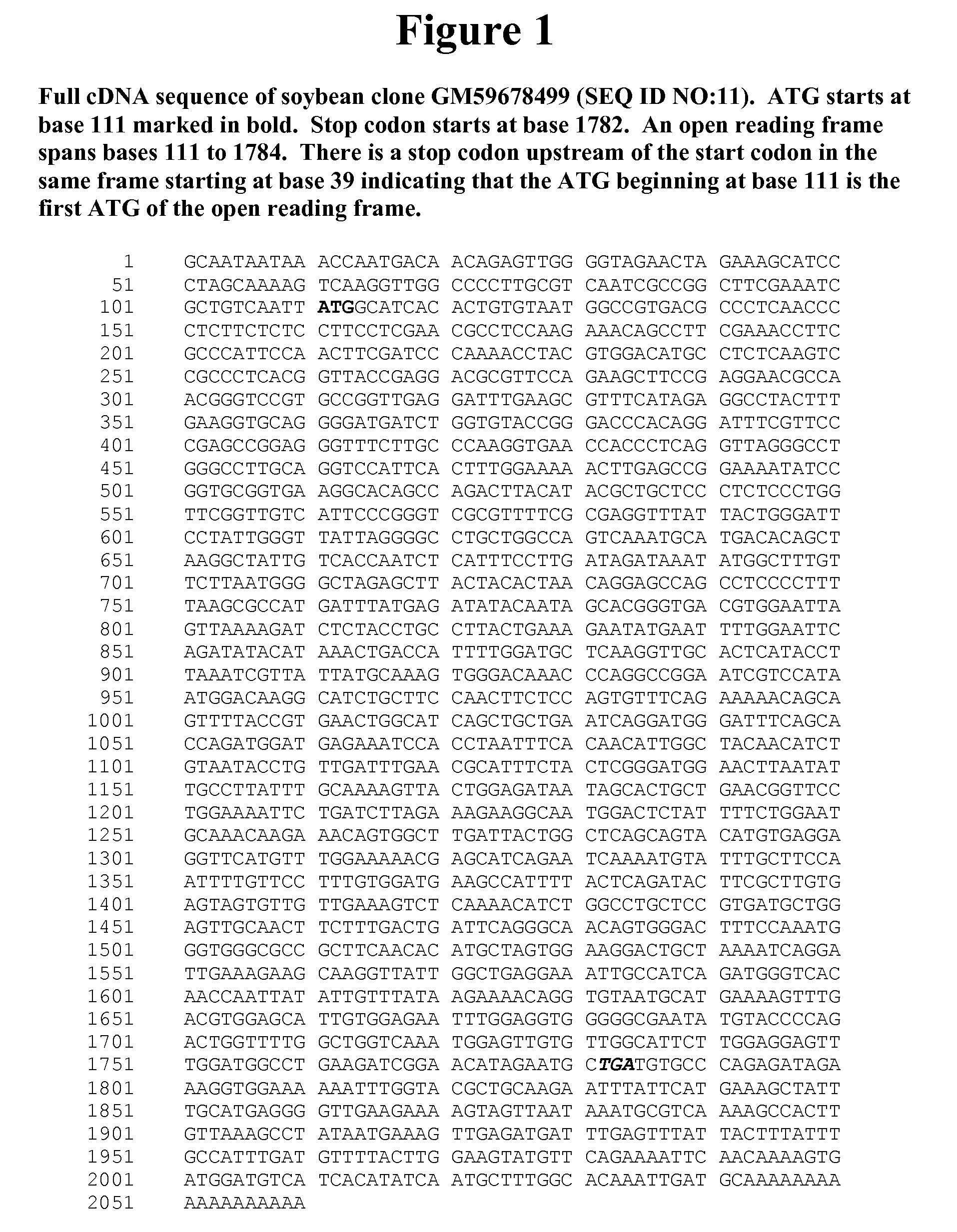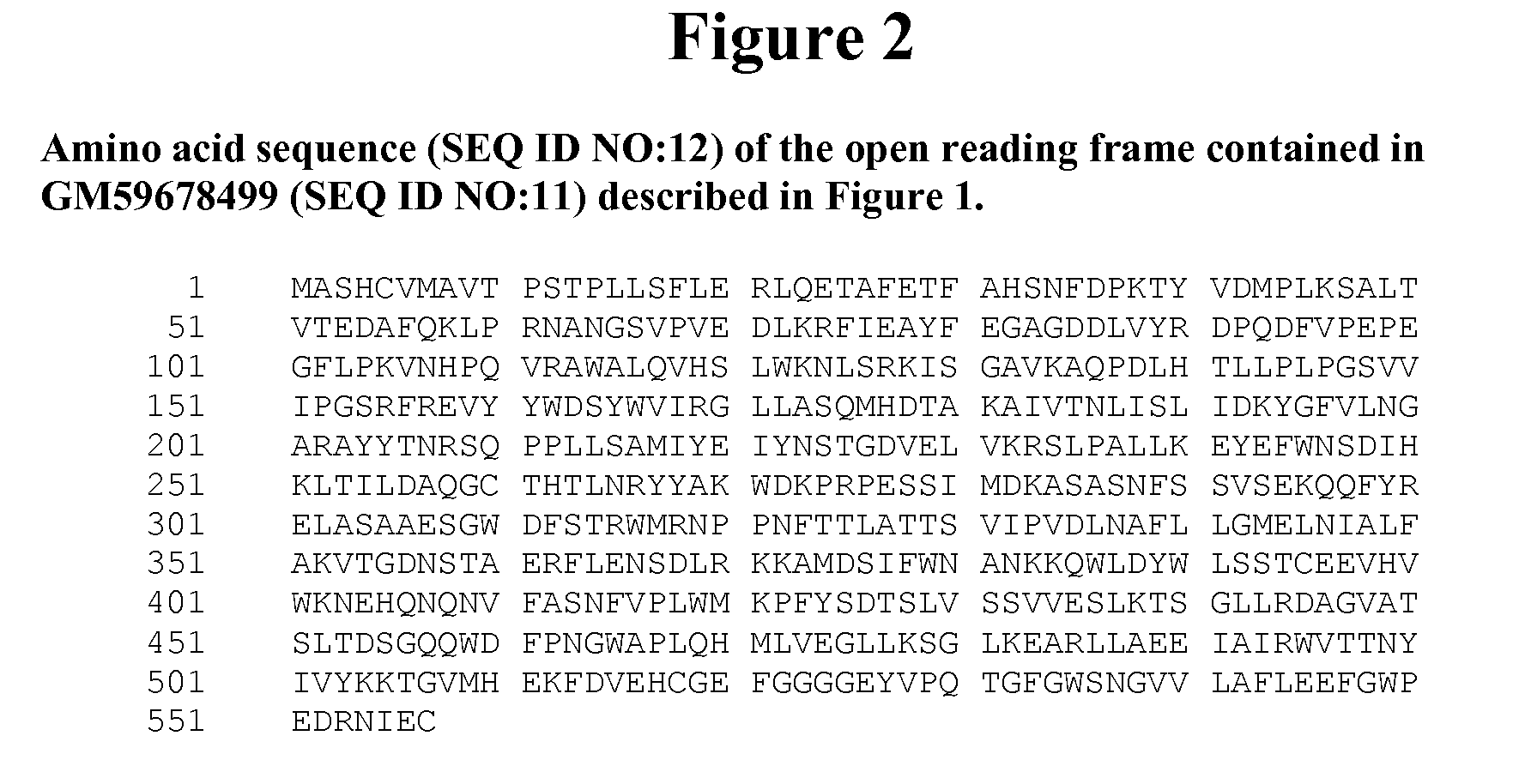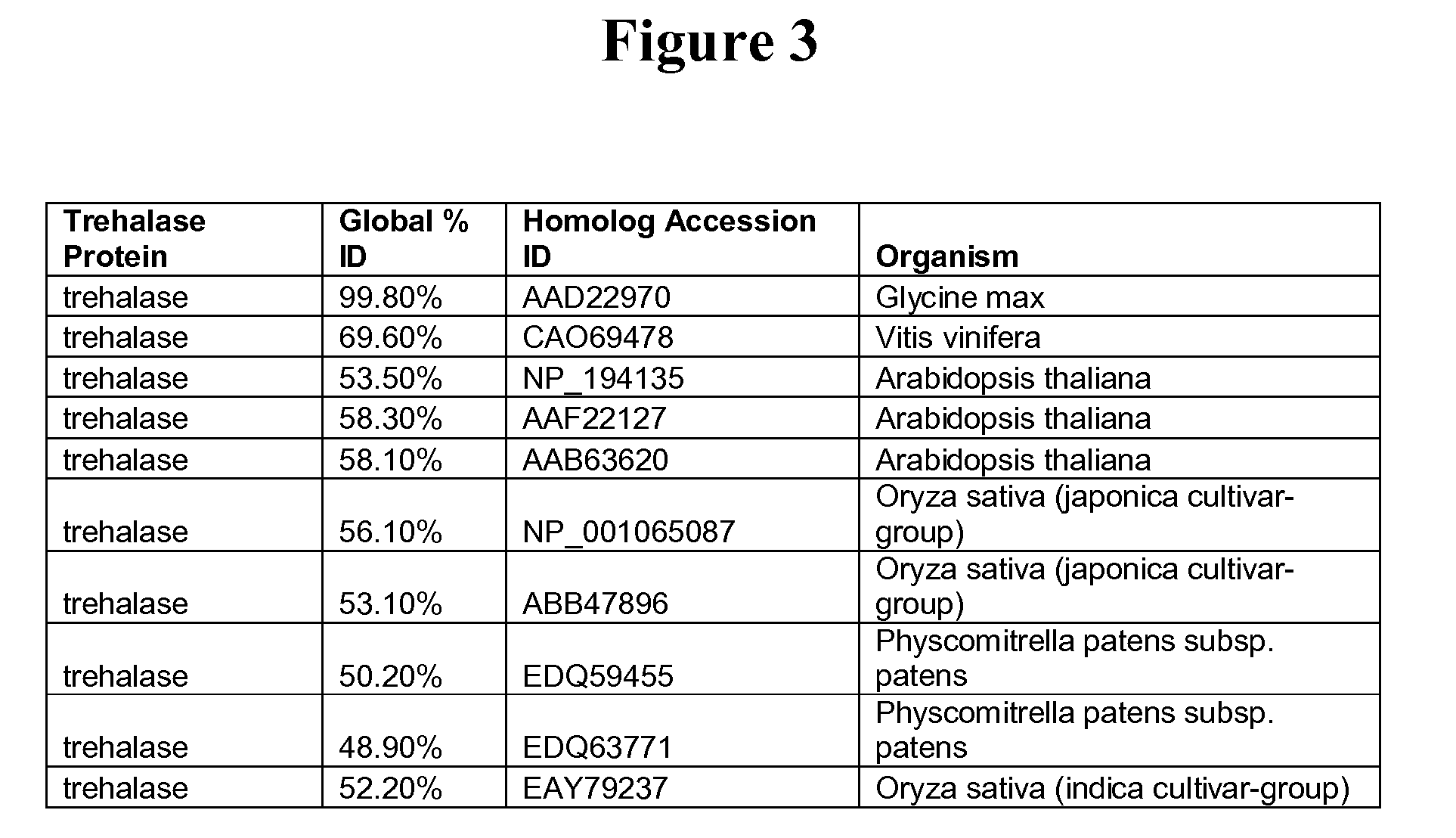Use of Trehalase Genes to Confer Nematode Resistance to Plants
a technology of nematode resistance and trehalase, which is applied in the field of soybean cyst nematode control, can solve the problems of wilting plants, soybean production is no longer economically possible without, and the estimated $100 billion crop loss worldwide, and achieves the effect of increasing the plant's ability to resist nematode infection, overcoming, or
- Summary
- Abstract
- Description
- Claims
- Application Information
AI Technical Summary
Benefits of technology
Problems solved by technology
Method used
Image
Examples
example 1
Identification of Genes Expressed Specifically in Syncytia
[0097]Microarray analysis of laser excised syncytial cells of soybean roots inoculated with inoculated with second-stage juveniles (J2) of Heterodera glycines race3 led to the identification of genes expressed specifically or differentially in syncytia. One such gene (52015943) is annotated as a trehalase-like protein. Table 1 summarizes the expression data as measured by cDNA microarray analysis across all three cell / tissue samples: syncytia, SCN infected non-syncytia and untreated control root tissues. Relative levels of gene expression are expressed as normalized signal intensities (±standard deviation) as described above.
TABLE 1Expression of Trehalase-like geneSyncytiaSyncytiaNon-Gene Name#1 (N)#2 (N)SyncytiaControl Roots52015943*698 ± 259 (4)525 ± 75 (5)122 ± 38126 ± 60(N) Number of cDNA microarray measurements
[0098]As demonstrated in Table 1, Soybean cDNA clone 52015943 was identified as being up-regulated in syncytia o...
example 2
Vector Construction for Transformation and Generation of Transgenic Roots
[0101]The full-length GM59678499 cDNA generated in Example 1 was sequenced and cloned into an expression vector containing a syncytia preferred (nematode induced) soybean MTN3 promoter (p-47116125) SEQ ID NO:13 (U.S. Ser. No. 60 / 899,714, the contents of which are incorporated herein by reference). The selection marker for transformation was a mutated acetohydroxyacid synthase (AHAS) gene from Arabidopsis thaliana that conferred resistance to the herbicide ARSENAL (imazepyr, BASF Corporation, Mount Olive, N.J.). The expression of mutated AHAS was driven by the Arabidopsis actin 2 promoter.
TABLE 3expression vector comprising bases 111 to 1784 of SEQ ID NO: 11Composition of the expression vectorvector(promoter::TLNCP)pAW322MTN3::TLNCP gene
[0102]Transgenic hairy roots were used to study the effect of the overexpression of a trehalase-like gene in conferring cyst nematode resistance. Vector pAW322 was transformed in...
PUM
| Property | Measurement | Unit |
|---|---|---|
| nematode resistance | aaaaa | aaaaa |
| resistance | aaaaa | aaaaa |
| temperature | aaaaa | aaaaa |
Abstract
Description
Claims
Application Information
 Login to View More
Login to View More - R&D
- Intellectual Property
- Life Sciences
- Materials
- Tech Scout
- Unparalleled Data Quality
- Higher Quality Content
- 60% Fewer Hallucinations
Browse by: Latest US Patents, China's latest patents, Technical Efficacy Thesaurus, Application Domain, Technology Topic, Popular Technical Reports.
© 2025 PatSnap. All rights reserved.Legal|Privacy policy|Modern Slavery Act Transparency Statement|Sitemap|About US| Contact US: help@patsnap.com



